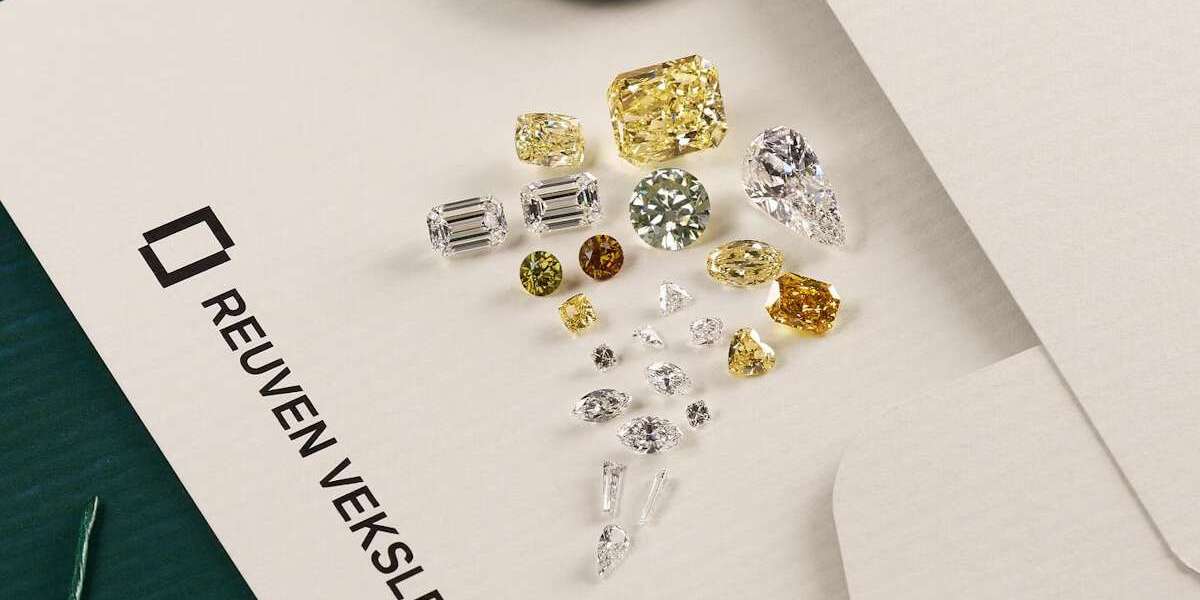Colored Diamond Investment: Market Performance Analysis
Colored diamonds represent one of the most distinctive segments of the gemstone investment market. Unlike their colorless counterparts, natural fancy-colored diamonds are exceptionally rare, with only a small fraction of all mined diamonds exhibiting rich and stable color. This scarcity, combined with rising global demand, particularly from private collectors and high-net-worth investors, has elevated colored diamonds into a serious asset class.
For investors seeking portfolio diversification, inflation hedging, or tangible stores of value, colored diamonds offer unique advantages. However, understanding market performance and value drivers is essential before allocating capital
This article provides a fact-based overview of historical trends, pricing factors, and critical considerations for anyone evaluating colored diamonds from an investment perspective.
Historical Price Trends and Market Growth
Over the past two decades, natural fancy colored diamonds – particularly pink, blue, and vivid yellow stones – have demonstrated steady long-term appreciation. According to the Fancy Color Research Foundation (FCRF), the overall index for colored diamonds rose by approximately 180% between 2005 and 2023, with vivid pinks leading the performance curve. These figures far outpace average returns for many traditional commodities in the same period.
Several market events have contributed to this growth:
- Declining supply: The closure of key mines such as Argyle (Australia) in 2020, formerly the primary source of pink diamonds, significantly tightened global supply.
- Growing collector interest: Auctions at major houses have set repeated price records, reinforcing perception of colored diamonds as store-of-value assets.
- Geopolitical uncertainty: Investors in regions with volatile currencies increasingly turn to hard assets, including diamonds.
The rarity of colored diamonds means their price behavior differs from that of white diamonds, which are more susceptible to mass production, synthetics, and general jewelry market trends.
Key Differences Between Colored and White Diamonds:
- Color vs. clarity focus: Value in colored diamonds is driven by hue, tone, and saturation; in white diamonds, clarity and cut often take precedence.
- Market supply: Colored diamonds account for less than 0.01% of global diamond output.
- Price performance: Colored diamonds often show stronger appreciation under constrained supply conditions.
In summary, historical market data confirms that certain colored diamonds – particularly those with vivid intensity and over 1 carat – have consistently outperformed white diamonds in investment terms.
Factors Influencing Market Performance
Several gemological and market-driven factors influence the investment performance of colored diamonds. Understanding these variables is critical for accurate valuation and informed purchasing decisions.
The primary value driver is color intensity, graded by the Gemological Institute of America (GIA) on a scale that includes Fancy Light, Fancy, Fancy Intense, and Fancy Vivid. Among these, Fancy Vivid stones command the highest premiums due to their saturated, vibrant hue.
Carat weight also plays a role. While small stones (under 0.50 carat) can still appreciate if the color is exceptional, investment-grade diamonds generally start from 1 carat upward. Clarity and cut affect overall appearance but are secondary to color in value formation.
Market demand varies by region.
For example:
- Asia-Pacific buyers tend to favor pink and red diamonds.
- Middle Eastern collectors often prefer vivid yellows and greens.
- Western investors increasingly focus on blue diamonds due to their auction prominence.
Blended colors, such as purplish-pinkor green-blue, can carry niche appeal but are harder to price due to inconsistent supply and rarity perception.
Macroeconomic factors such as inflation, currency devaluation, and luxury sector cycles also influence investor behavior. In uncertain markets, colored diamonds tend to retain value better than many financial instruments.
Risks and Considerations for Investors
Despite their appeal, colored diamonds carry specific risks that must be understood by prospective investors. Unlike publicly traded assets, the colored diamond market is relatively opaque, with limited price transparency and few standardized valuation benchmarks outside of auction results and private sales.
Liquidity is a key concern. While top-quality stones may find buyers at auctions or through dealers, resale can be time-consuming, especially for lower-grade or niche-colored stones. Pricing is also subjective, often depending on the buyer’s perception of rarity and beauty.
Certification is essential to mitigate these risks. Reputable grading laboratories, particularly the Gemological Institute of America (GIA) and the Swiss Gemmological Institute (SSEF), provide standardized reports on color origin (natural vs. treated), color grade, and other gemological attributes. These documents are vital for verifying authenticity and marketability.
Buyers should be cautious of:
- Treated diamonds, which have artificially enhanced color and significantly lower investment value
- Synthetic stones, lab-created diamonds that may be visually identical but lack natural rarity
- Inadequate insurance or improper storage, which can result in physical damage or value depreciation
Investor Checklist: Due Diligence Before Acquiring Colored Diamonds
- Confirm GIA/SSEF certification for color origin and grading
- Evaluate stone under neutral lighting with a professional
- Request detailed provenance if available
- Work only with reputable dealers or auction houses
- Understand resale channels and likely holding period
In short, professional guidance and authentication are not optional – they are critical safeguards in this market.
Strategic Role in Investment Portfolios
When approached strategically, colored diamonds can offer non-correlated, tangible value that complements a diversified portfolio. Their performance has historically shown resilience to macroeconomic volatility, particularly during inflationary periods or currency instability.
High-value stones – especially those with vivid color grades and over 1 carat – are increasingly viewed as portable stores of wealth. Ultra-rare colors such as Fancy Vivid Pink, Blue, and Red are considered by some investors to be generational assets due to their scarcity and historical price trajectory.
However, it is important to recognize that colored diamonds are best suited for medium- to long-term holding horizons, rather than speculative short-term gains. Their appreciation potential is strongest when combined with patient capital and expert acquisition.
Practical Tip: Choosing the Right Stone for Investment
- Prioritize natural origin, vivid saturation, and GIA certification
- Look for stones with documented auction comparables
- Avoid commercial-grade colored diamonds with weak or uneven tone
- Consider professional appraisal and secure vault storage
Informed selection, supported by gemological insight and market research, is key to realizing the full investment potential of colored diamonds.
Conclusion
Colored diamonds combine extreme rarity, aesthetic uniqueness, and historical price strength, making them a compelling option for discerning investors. Unlike more volatile financial instruments, their value is tied to physical scarcity and global collector demand – factors that are difficult to replicate or disrupt.
However, realizing this potential requires more than capital – it requires knowledge. From understanding color grading and market trends to verifying natural origin through certification, every step must be taken with precision.
Natural fancy-colored diamonds are not commodities; they are individual assets, each with its own risk-return profile. Professional consultation with qualified gemologists and advisors is essential to avoid missteps and ensure alignment with long-term investment goals.
For those prepared to invest thoughtfully, colored diamonds can serve not just as beautiful objects – but as durable, appreciating stores of wealth.
Building a diversified colored diamond portfolio requires access to authenticated specimens with verified provenance and quality documentation. Our investment-grade collection features certified natural colored diamonds from premier sources worldwide, each accompanied by comprehensive gemological reports that support informed acquisition decisions.
Main Collection:
By Color Intensity:
- https://reuvenveksler.com/diamonds/color-colored/intensity-faint/
- https://reuvenveksler.com/diamonds/color-colored/intensity-fancy/
- https://reuvenveksler.com/diamonds/color-colored/intensity-fancy-dark/
- https://reuvenveksler.com/diamonds/color-colored/intensity-fancy-deep/
- https://reuvenveksler.com/diamonds/color-colored/intensity-fancy-intense/
- https://reuvenveksler.com/diamonds/color-colored/intensity-fancy-light/
- https://reuvenveksler.com/diamonds/color-colored/intensity-fancy-vivid/
- https://reuvenveksler.com/diamonds/color-colored/intensity-light/
- https://reuvenveksler.com/diamonds/color-colored/intensity-very-light/
By Cut Style:
- https://reuvenveksler.com/diamonds/color-colored/shape-ashoka/
- https://reuvenveksler.com/diamonds/color-colored/shape-cushion/
- https://reuvenveksler.com/diamonds/color-colored/shape-emerald/
- https://reuvenveksler.com/diamonds/color-colored/shape-heart/
- https://reuvenveksler.com/diamonds/color-colored/shape-marquise/
- https://reuvenveksler.com/diamonds/color-colored/shape-oval/
- https://reuvenveksler.com/diamonds/color-colored/shape-pear/
- https://reuvenveksler.com/diamonds/color-colored/shape-radiant/
- https://reuvenveksler.com/diamonds/color-colored/shape-round/
- https://reuvenveksler.com/diamonds/color-colored/shape-round-brilliant/
By Clarity Grade:
- https://reuvenveksler.com/diamonds/color-colored/clarity-fl/
- https://reuvenveksler.com/diamonds/color-colored/clarity-if/
- https://reuvenveksler.com/diamonds/color-colored/clarity-vvs1/
- https://reuvenveksler.com/diamonds/color-colored/clarity-vvs2/
- https://reuvenveksler.com/diamonds/color-colored/clarity-vs1/
- https://reuvenveksler.com/diamonds/color-colored/clarity-vs2/
- https://reuvenveksler.com/diamonds/color-colored/clarity-si1/
- https://reuvenveksler.com/diamonds/color-colored/clarity-si2/
- https://reuvenveksler.com/diamonds/color-colored/clarity-i1/
- https://reuvenveksler.com/diamonds/color-colored/clarity-i2/
By Carat Weight:
- https://reuvenveksler.com/diamonds/color-colored/weight-0-25/
- https://reuvenveksler.com/diamonds/color-colored/weight-0-5/
- https://reuvenveksler.com/diamonds/color-colored/weight-0-75/
- https://reuvenveksler.com/diamonds/color-colored/weight-1-0/
- https://reuvenveksler.com/diamonds/color-colored/weight-1-5/
- https://reuvenveksler.com/diamonds/color-colored/weight-2-0/
- https://reuvenveksler.com/diamonds/color-colored/weight-2-5/
- https://reuvenveksler.com/diamonds/color-colored/weight-3-0/
- https://reuvenveksler.com/diamonds/color-colored/weight-4-0/
- https://reuvenveksler.com/diamonds/color-colored/weight-4-5/
- https://reuvenveksler.com/diamonds/color-colored/weight-5-0/
- https://reuvenveksler.com/diamonds/color-colored/weight-7-5/
- https://reuvenveksler.com/diamonds/color-colored/weight-9-0/
- https://reuvenveksler.com/diamonds/color-colored/weight-10-0/



